Table of Contents
In recent years, the USA has experienced several brutal winter storms. In 2021, Winter Storm Uri swept across most of the United States, affecting more than 170 million people, and causing blackouts for around 9.9 million.
We often forget how much we rely on electricity, to keep warm, to cook, and for entertainment. Before the next winter storm hits, and the powers out, prepare as best you can to keep you and your family safe and warm during a winter power outage.
Why Are Blackouts More Common in Winter?
Blackouts and extended power outages are more common in winter than in summer — and potentially far more devastating.
For example, the 2021 Texas Winter Blackout left over 4.5M homes and businesses without electricity for many days and caused an estimated 700+ deaths.
Power outages are more common in winter for numerous reasons, including:
- Unsustainable demand for heat and electricity
- Disruption from extreme weather events like blizzards, ice storms, and high winds
- Interference from small animals seeking warmth
- Aging infrastructure
If you live in a location that frequently experiences harsh winter weather, you need to be prepared in the event of a blackout.
When Should I Start Preparing for a Winter Blackout?
Begin preparing for a winter blackout process before temperatures drop below about 50°F (10°C).
Depending on what region you live in, you aim to complete your preparation by early to mid-autumn. Don’t wait until the year’s first frost to prepare for a power outage.
Leaving preparation for winter power outages to the last minute can have devastating consequences for your family’s safety and your home.
How to Prepare for a Power Outage in Winter
1. Winterproof Your Home
Before winter creeps in, prepare your home as best you can to keep the warmth in during an outage. Insulate your attic and walls and block drafts using weatherstrips, caulking, or even window film. Draft guards can be attached to the bottom of doors to prevent heat from escaping. Although weatherizing your home might be costly, these solutions can also reduce your utility bills in the long run (yay!).
2. Prepare a Power Outage Survival Kit
With any luck, you’ll know well in advance if there’s a storm on the way that will likely cause a winter power outage, but these essentials will get you through, especially when it’s unexpected.
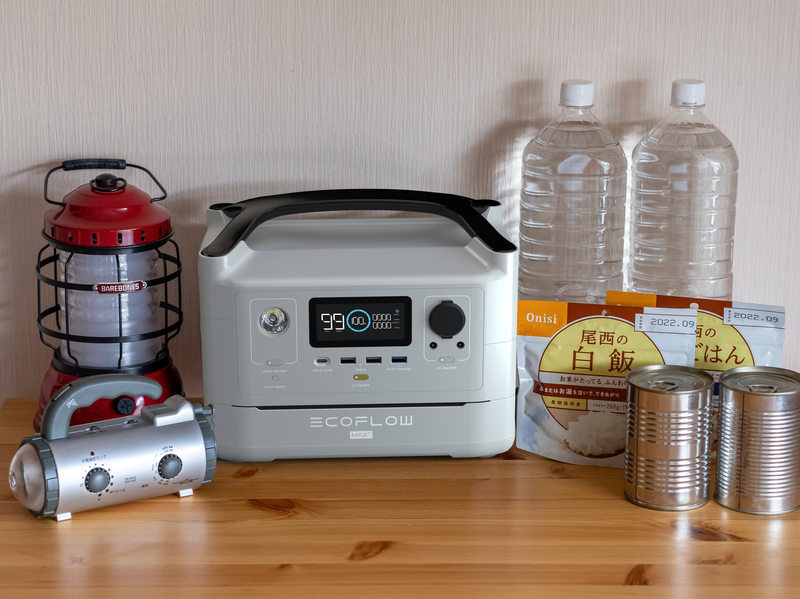
Here’s a list of suggestions for your winter outage emergency kit:
- Bottled water
- Non-perishable food (canned goods and nuts etc.)
- Battery-powered radio (and batteries)
- First aid kit and necessary medication
- Pet supplies (if required)
- Set of warm clothes for each family member
- Essential documents (or have access to them)
- Blankets or bedding
- A fully recharged portable power station
3. Prepare Food & Water
Store several water bottles and non-perishable foods such as canned beans and vegetables, dried fruits, and nuts. Have enough for a few days for each person in your home. When you know a storm is on the way, fill your bathtub with water for washing, and have a bucket handy for flushing the toilet, just in case your water supply gets affected. If there’s a danger of your pipes freezing, locate your main water valve and shut it off before the storm hits.
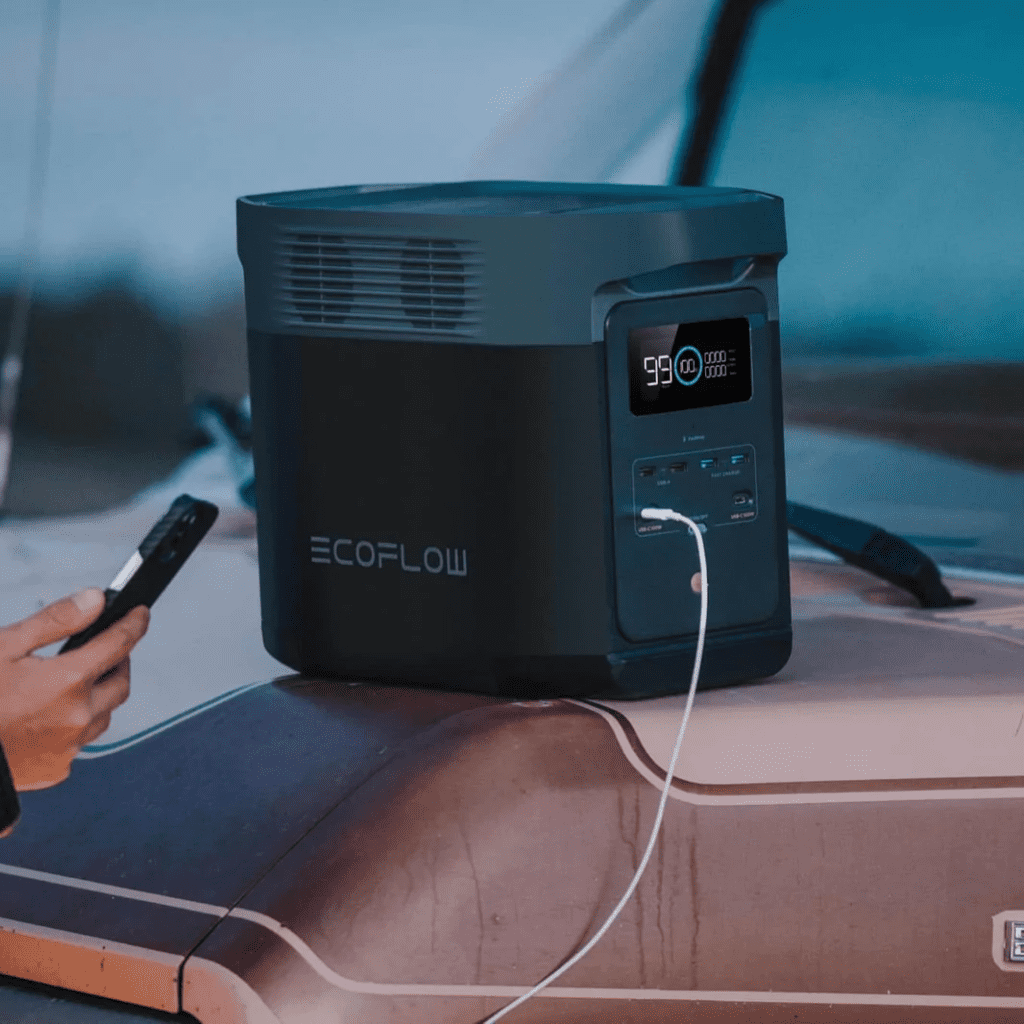
4. Warm Clothes
Make sure to have winter clothes ready for all your family members. Several layers are better than one heavier layer, while a hat will prevent heat from escaping from the top of your head. Scarves can protect the lungs from the cold, while mittens generate more heat for your hands since they keep your fingers together. Keep an extra set of clothing and shoes handy for an emergency.
5. Torches & Radios
If you’re not using a portable power station for lights or to power communication devices, keep battery-powered or hand-crank torches and radios handy. Radios can keep you in the loop with local news, weather reports, and emergency information. And, while it’s tempting to create a cozy ambiance with candles, torches are much safer and more reliable, especially during a storm.
6. Fill Your Vehicle With Gas
Make sure your car or truck is ready if you need to evacuate. Fill your vehicle’s gas tank, or store a canister at home if you need it. Since gas stations use electricity, fuel tends to be unavailable during an outage. Gas in the tank also prevents fuel lines from freezing during a winter storm.
7. Prep an Old School Corded Phone
Cell phones should work during a power outage, although calls might not make it through, especially during emergencies. While a corded phone doesn’t guarantee you’ll make contact with a family member, it means you can save your cell phone battery for emergencies. Alternatively, if you’ve prepared a portable power station, there’s no need to worry about your cell phone battery!
8. Stock up on Fuel for a Wood Burning Fire
If you have a wood-burning or gas fire, store enough fuel to keep at least one room warm. Many gas fires don’t require a pilot ignition to start, so you can use your fireplace to stay warm as long as the room is well ventilated.
9. Turn Down Your Fridge or Freezer
To keep your food cooler for longer:
- Turn down the temperature on your refrigerator or freezer before an outage happens.
- Move milk and meat into the freezer to keep them cold.
- Avoid opening your fridge for as long as possible to prevent your goods from perishing.
10. Prepare Medication
If you or a family member need to take regular medication, make sure to renew your prescription, allowing for an extended outage that could last up to a week.
11. Prepare a Portable Power Station
Purchasing a portable power station will ensure you avoid many power outage issues that occur during a winter outage. A portable power station is a battery-powered alternative to a gas generator that can be used inside (or outside) during a blackout.
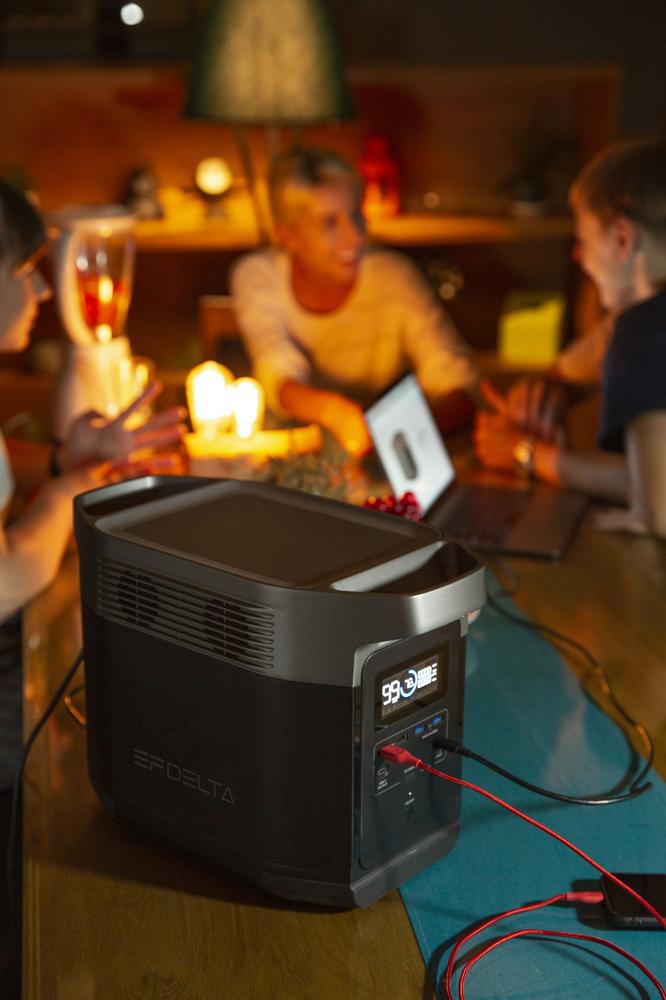
While you can choose to power certain appliances or rooms in your home, you can also prepare your entire home for power blackouts with several batteries, solar panels, and EcoFlow Smart Home Panel.
Using a portable power station and an electric hot plate, you can cook basic dishes or boil a kettle to make a hot drink or meal. Keep the food in your fridge or freezer from going off, with a battery that will keep them running for several days.
You can also avoid storing additional fuel for a wood or gas stove and run an electric heater instead. There’s no need to worry about ventilation, either since the power is clean and without fumes. Even with a small portable power station, you can keep your phone charged, so you never need to worry about your cell phone battery dying. You don’t need to rely on the radio for information; you can keep your television or laptop powered up or charged with a power station.
12. Unplug Appliances
When the power comes back on, there may be an electrical surge that damages your appliances. Find out which appliances need to be unplugged before an outage or unplug everything to avoid later issues. Appliances with a microprocessor are the ones to look out for, such as TVs, computers, microwaves, dishwashers, washing machines, and refrigerators.
How to Stay Warm Without Power During a Winter Blackout
Hopefully, you’ve had enough warning to prepare for a power outage. A portable power station can help keep your family warm during a power outage, allowing you to boil a kettle for a hot drink, run a heater, or even cook a warm meal with a hot plate or microwave. After the storm passes, use portable solar panels during the day to recharge your portable power station.
A portable battery can make your life easier during a power outage, but there are still ways you can prepare for a few nights without a heat source.
13. Live in One Room
To store what little warmth you might have once the power goes out, keep everyone together in a room with a heat source, such as a wood or gas burner. If you don’t have a burner or fire, stay in a small space, your body heat will keep you warmer for longer.
14. Block Drafts
Avoid opening doors where possible and block any drafts using towels and blankets, especially on windows and doors. Cover windows with curtains or blinds to keep warmth in during the night.
15. Layer Up
Make sure to cover up as much of yourself as possible and wear plenty of layers. Thermal underwear and wool socks are good first layers, then pants, loose shirts, and coats. Hats, mittens, and warm boots will also prevent heat from escaping your extremities.
Things to Do After a Winter Power Outage
When the power returns, things may not go back to normal straight away. You may continue to have more minor outages, or your home and neighborhood may have taken the brunt of a storm or high winds.
16. Take Care Outside
Winter storms can often take down power poles and lines, so take extra care when going outside after an outage. Don’t handle trees or branches touching electricity lines, either, as these downed power lines could well be live.
17. Check for Damage
As well as storm damage, check for burst or broken pipes. Test your water heater once the electricity is back on. If the water in the tank won’t heat up or it keeps tripping the electrics, you may need to call a plumber. If your fridge has been off for more than 4 hours, you might need to throw away food that has spoiled. Freezers, however, can keep cold for around 24 hours, especially if they’re full.
18. Restock Your Supplies
Ensure that you have sufficient food and water for extended outages.
Even if you have a generator or home backup battery, it’s a good idea to keep plenty of non-perishable food items like canned goods and even emergency rations in case the blackout lasts longer than your capacity to keep your fridge and freezer running.
Each time you dip into your emergency supplies, restock them at the first available opportunity.
EcoFlow RIVER 2 Pro
During any power outage – especially extended grid failures — maintaining contact with the outside world is a necessity.
Without an emergency backup power supply, essential devices like smartphones and laptops are likely to run out of power in a few hours or, at best, after the first day.
With the affordable and highly portable EcoFlow RIVER 2 Pro, you can keep all of your consumer electronic devices charged and even operate 80% of home appliances with X-Boost.
Like all EcoFlow portable power stations, you can recharge the RIVER 2 Pro using clean, renewable solar energy to generate off-grid power indefinitely. Just add an EcoFlow 220W bifacial portable solar panel and generate up to 1.kWh a day of electricity using the power of the sun.
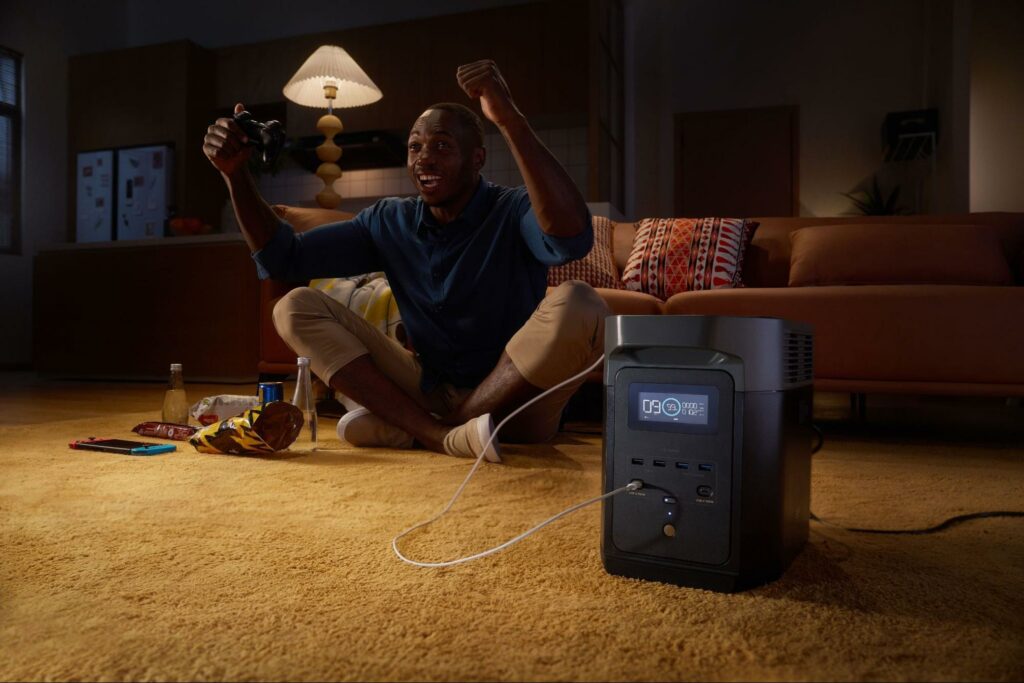
EcoFlow DELTA 2
For entry-level home backup, you can’t do better than the EcoFlow DELTA 2.
EcoFlow DELTA 2 offers 1800W of AC output (2700W starting wattage) and, thanks to X-Boost, can operate up to 2200W of high-wattage appliances simultaneously through intelligent running watts management.
It’s more than powerful enough to run your fridge and other essential appliances. With 1024wH of storage capacity (expandable to 3kWh with the EcoFlow DELTA Max Smart Extra Battery), DELTA 2 will keep your essentials running for at least a day during a blackout.
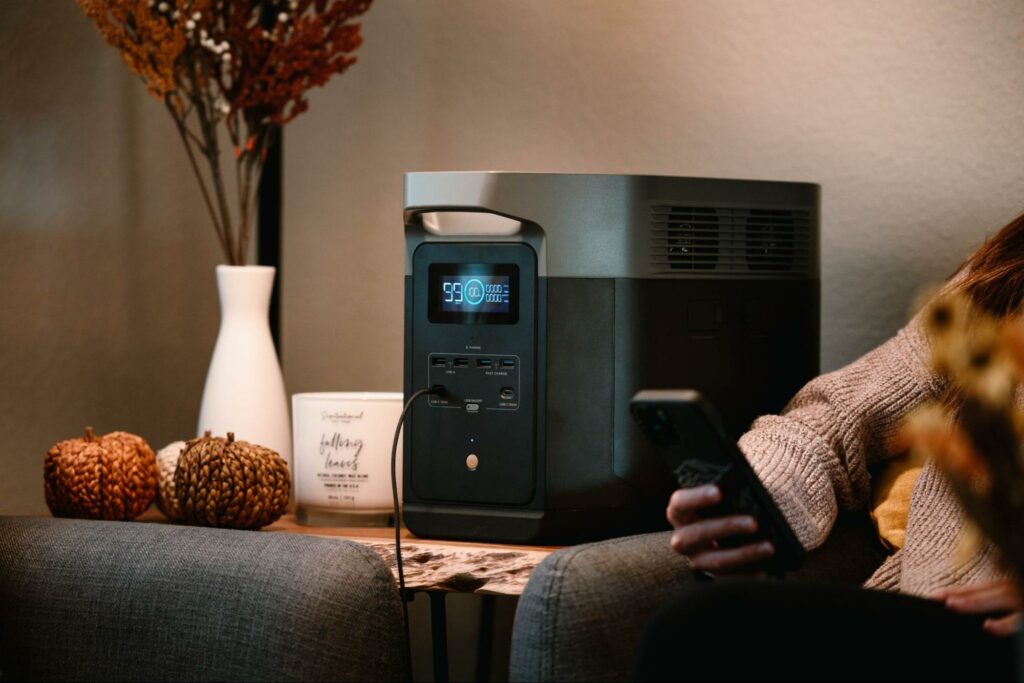
EcoFlow DELTA 2 Max
With lightning-fast multi-charging and up to 6kWh of storage capacity, EcoFlow DELTA 2 Max is powerful enough to run virtually any home appliance for days.
With a cycle life of 3000+ full charges/discharges, expect 10 years of daily use with no noticeable decrease in performance.
EcoFlow DELTA 2 Max is the most affordable EcoFlow solar generator that’s eligible for the 30% Federal Solar Tax Credit — officially known as the Residential Clean Energy Credit — which can save you over $800 against your federal income tax owed.
With up to 1000W of solar charge input, you can connect up to 3 x EcoFlow 400W rigid solar panels and recharge from 0-80% in only 43 minutes when combined with AC charging.
EcoFlow DELTA Pro
If you’re interested in a whole home backup power solution, look no further than EcoFlow DELTA Pro.
DELTA Pro was EcoFlow’s original flagship product. While not as powerful as the newly launched DELTA Pro Ultra, it’s got more than enough juice to back up the average home.
EcoFlow DELTA Pro 3 and DELTA Pro Ultra feature proprietary X-Core 3.0 tech architecture, providing industry-leading performance, safety, and intelligence.
X-Core 3.0 delivers the following benefits.
- X-Stream delivers record-speed charging — only 50 minutes
- X-Boost’s revolutionary soft-start algorithm supports up to 6000W of appliances and central HVAC systems with just one unit
- X-Link parallel expansion provides up to 21.6kW of output power and 90kWh of electricity storage
- X-Quiet volume minimization means whisper-quiet operation at an industry-best 30dB*
- X-Fusion outpowers the grid by providing up to 7000W of electricity output from a single AC outlet in bypass mode. Standard household plugs deliver only 1800W. Plug in EcoFlow DELTA Pro 3 or DELTA Pro Ultra and increase your output by close to 300%
- X-Guard is a protective triad of structure, material, and AI that keeps your home and family safe. It can even self-extinguish in the unlikely event of a fire.
Find out more about X-Core 3.0 here.
EcoFlow DELTA Pro offers up to 7.2kW of AC output (14,400W surge) and is expandable to up to 25kWh of storage with a second DELTA Pro, double voltage hub, Smart Extra Batteries, and the EcoFlow Smart Home Panel for integration with your home circuitry.
Thanks to the EcoFlow smartphone app, you can monitor and control your whole home backup power solution from anywhere with an internet connection.
With up to 3,200W of solar charge input, you can connect up to 8 x 400W solar panels and keep your home running indefinitely during a winter power outage.
Frequently Asked Questions
There are numerous reasons why winter blackouts are increasing. The most crucial include aging infrastructure, increasing demand, and scarcity of natural gas supplies to fuel gas-fired power plants. Unfortunately, all of the factors contributing to more frequent blackouts are likely to only get worse. Preparing for winter power outages and investing in a home backup system is rapidly becoming a necessity for those living in cold climates.
Final Thoughts
Preparing your home and family for winter power outages has never been more essential.
As extended winter blackouts become more frequent, adequate preparation and a home backup power solution can be the difference between life and death.
EcoFlow’s solar generators can power everything from your personal devices to your entire home.
Don’t get left in the dark and cold this winter. Invest in a home backup power solution today.
*Under 2000W output
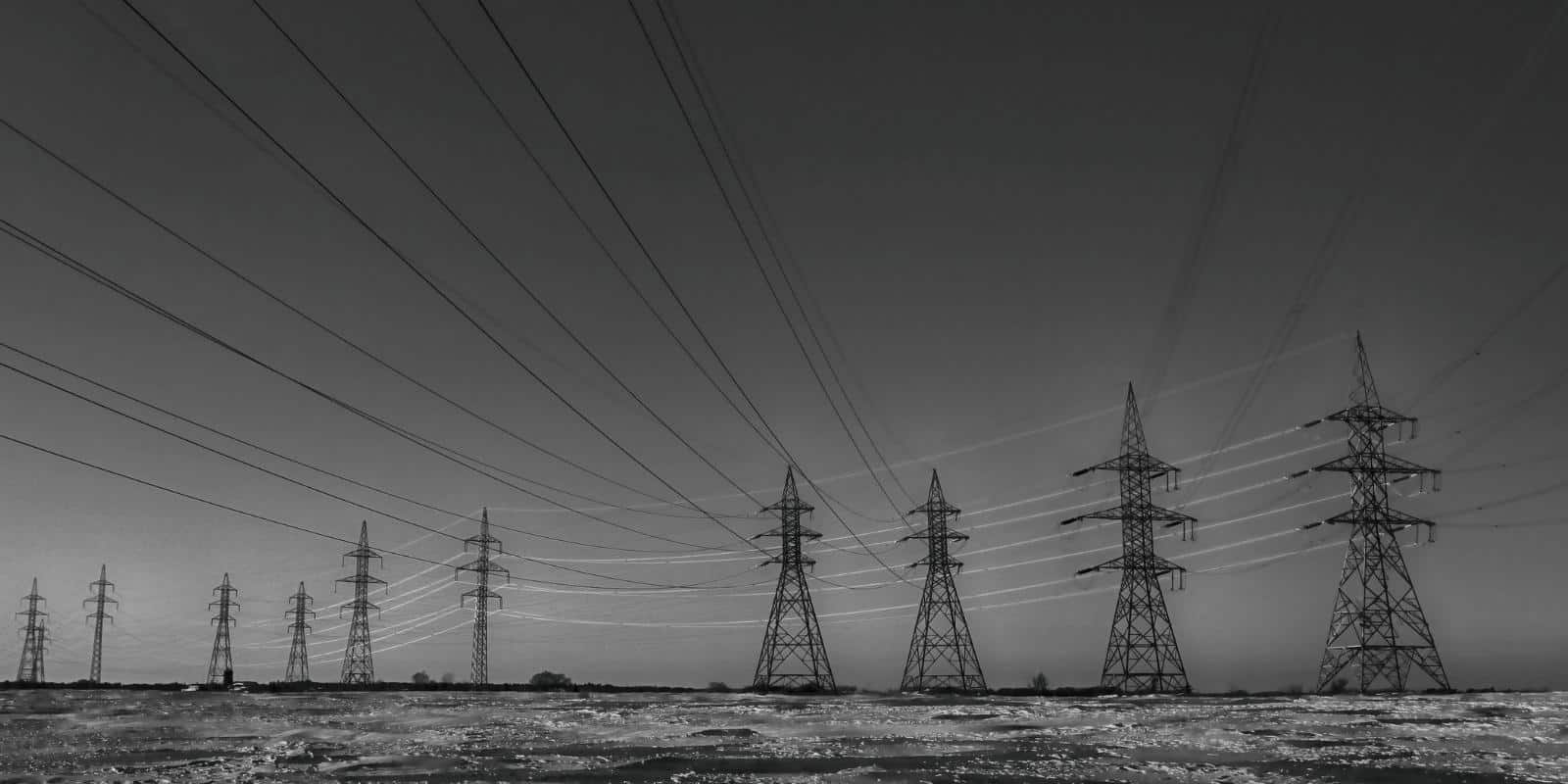
I agree! It can happen at any time, so it is important to know what to do when the power goes out. While there are things you can do to prepare, you will still need to act fast to protect your devices and appliances and to keep your family and pets safe. The steps you take in the initial minutes of a power outage can also improve how well you get through it.